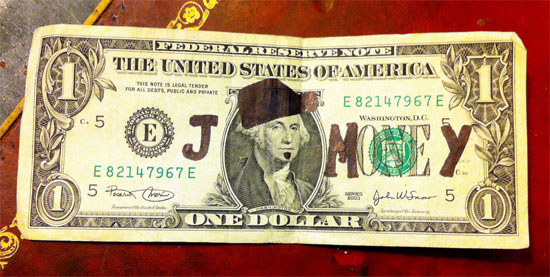(Guest post by the folks at Outright – my new favorite product!! I use them to manage and track all my business money, and I can’t tell you how many hours they’ve saved me so far – I’m a huge fan :))
Man, selling online and freelancing is awesome, isn’t it? You get to set your own hours, don’t answer to anyone, plus you don’t have to get mad at someone because you clearly have a sign marked “Bathroom for Customers Only” but they used it anyway. Some days it’s tough to think of reasons to be upset about your life.
That is, until quarterly estimated taxes come around. Day ruined.
If you don’t know what quarterly estimated taxes (QETs) are, then you’re either new or in for a rude awakening. See, the United States has what is known as a “pay-as-you-go” income tax. If you have a regular W-2 job, then you’ll lament over those taxes taken out of every check. But the self-employed truly have to do everything themselves – even take taxes out of their own paychecks. For this reason, every few months self-employed people are required to send in a payment to Uncle Sam. And you have to figure out the amount for yourself and send it in on your own. If you don’t, you’ll be in for a huge surprise come April!
But don’t worry – if this is the first you’ve heard of these things, we’re here to help. Read on for the what, when, and how of these accursed tax payments!
What are quarterly estimated taxes?
QETs are certainly a pain, but they do make some sort of sense. If you worked at an office, you would have your taxes taken out from each paycheck. Your individual sales through your online store or jobs you do for your freelance business don’t have any taxes taken out.
However, you still owe taxes to the government! So every quarter you have to dip into your accounts and send a percentage out. If you don’t, you owe even more during tax time in April as you’ll be hit with fees for failing to “pay as you go.”
When are quarterly estimated taxes due?
QETs are quarterly payments, so once every few months they’ll sneak up and tap you on the shoulder. However, if you know what the dates are beforehand you’ll be way more prepared.
- Quarter 1 just passed in April; your first quarterly payment was due the same day your federal taxes were due. The remaining three dates for the business year are:
- Q2: June 15, 2012 (flying up soon!)
- Q3: September 17, 2012
- Q4: January 15, 2013
Then the fun starts all over again in April. If you haven’t started on your Q2 taxes, it’s definitely time to at least start thinking about it! (EDITOR’S NOTE: June’s payment is the worst cuz it hits you so quickly after the 1st one of the year in April! I hate it…)
How do I calculate quarterly estimated taxes owed… and pay the darn things?
If you don’t know what to do, though, it’s difficult to wrap your mind around sending a payment to Uncle Sam in the middle of the year. How in the world do you figure out what you owe, anyway? Where do you send it when you do figure it out?
First of all, just like your federal taxes in April, you’ll want to get everything in order. Papers scattered around your office just won’t cut it! If you don’t have a good filing system in place, work on that first. It may feel like you’re wasting time, but you definitely don’t want to miss a vital receipt or bill.
Now, have you ever done a tax form harder than a 1040EZ? If so, you already know what to do. You’ve got to get an adjusted gross income based on how much you made minus expenses. So that means adding up every single receipt from every single sale or job, then taking out everything it takes to keep you in business like materials and bills.
It may be a good idea to work off last year’s tax form. It can give you a better idea how much you’ve made over the last year. After you figure your amount of tax liability from the last year, divide by four and you can get your quarterly payment!
To send in your payment, pick up a copy of 1040ES, the tax form specifically made for QETs, then send the completed form to your nearest IRS tax office. If you’d rather do it online, head over to the IRS’ payment system. One of the benefits of using this system is you can set it up to make automatic payments in the future.
If this seems like too much of a headache (trust us, we know!), Outright.com offers a handy quarterly estimated taxes estimate. Import your bank accounts, PayPal, and credit cards into your free Outright account, then head over to the Taxes tab to check out what you owe. (Keep in mind we can’t predict your tax credits – such as childcare or the earned income credit – so our estimate will err on the side of paying more and keeping you out of trouble with the IRS.)
[J$: I have my accountant figure out all this stuff for me, but I STILL track everything through Outright and keep all paperwork filed away too as back up…]
If you have more questions, you can also check out our own Q&A section on our site, or head over to the Outright Community to ask for help from our expert accountants about your specific situation. Taxes are a necessary evil, but one you can conquer. Now let’s get this over with so you can get back to what you do best… running your business!
————
Guest post by the team at Outright.com, the easiest way to manage your small business finances online – automatically (and free)!
[EDITOR’S NOTE: Remember earlier this year when it took me days and DAYS to get everything prepared for taxes last season? Well as of now I have ZERO work to do for this year’s taxes so far cuz I literally check Outright once or twice a month :) I keep all paperwork needed, etc in my filing drawer, but everything is now tracked online rather than in my crappy spreadsheets I’d been using for years – it’s awesome! And they’re officially in my list of kick-ass product recommendations ;) ]
(Photo by ColumbusCameraOp)
Get blog posts automatically emailed to you!





I just pay a flat % of my gross receipts – I worked out the % that first year and now I just continue it. It’s worked out well for the 8 years I’ve been in business. I usually end up over-paying a bit for the year, but if so just roll that over to next years estimated taxes. No cost, no hassle. Simple.
What you’ve left out here is that self-employed people have to pay MORE. When you have an employer, they pay half of your social security tax. As a self employed person, you are the employer, so you’re responsible for the employer’s share as well as your own.
So instead of paying 6.35% towards social security, you’re responsible for all 12.2%. And in 2013, that figure goes back up to 15.3%. It’s a big shock when you calculate that first self-employment tax payment and realize that depending on your federal income tax bracket, fully 1/3 to 1/2 of what you earned goes to the tax man.
No one pays 50% of their gross in taxes. I’m in a high tax bracket, and in CA which has a high state tax – and I’ve never some close to that.
I had to pay estimated quarterly taxes for my first job, for which I received a 1099-G. I didn’t think it was difficult or complicated – the hardest part was knowing that we had to do it.
Ughh – I hate ’em with a passion. I stay organized with excel on my own, it’s just seeing the drop in the account these 4 times of the year. I gotta send that out soon!
I’m a massive fan of Outright too! I started using them in February and it’s the best thing I could have done. They rolled out a free app recently and I’m in love :) Plus seeing my estimated tax balance based on the income I’ve earned, is super helpful and easy. Awesome stuff!
I’m also going to endorse Outright. They have a feature that gives you an estimate of what your estimated taxes are. It is a great tracking program.
this was an immensely useful guest post. Thank you for explaining quarterly taxes.
Is there a threshold when it becomes neccessary? I know that you don’t have to report self-income if it’s under $4000 for the year. I don’t have a clue if my taco seasoning will sell well enough to hit 4k this year and I certainly won’t by September. But I wouldn’t want to have to file taxes later and get in trouble for not filing quarterly taxes because I thought I wasn’t going to have enough income to report.
A simple joy of not being a freelancer. No quarterly taxes.
Although I think this property tax thing is going to throw me for a loop in the fall.
Very good read. I have never had to pay Quarterly taxes to the Feds. I had to do it to the state once (I had an investment that did really well and the company was purchased while I was still in school so I made more on that than I did working part time). I paid the first two quarters then contacted an accountant who told me not worry about the next too since I was still in school and I would just be getting it back anyways. Oh the joys of dealing with the Feds and the State!
Glad y’all found this useful or at least interesting! Not to sound like a broken record again, or to hawk a product over and over here, but I seriously think they’re a great place to check out if you’re needing some help here! It really is SUPER easy to use! :)
@Diane – I thought I’d be doing the same thing too, but it seems my income fluctuates so much over time. At least the year and a half I’ve been self-employed so far, which is barely anything ;) I like the simplicity of it all though!
@Kara – Right?? I found that out only after going on my own too – was not a happy surprise :( Though I am getting used to it already now, so at least that’s good. Just means we gotta make even MORE money, yeah? ;)
@Diane – 50% is def. high – who’s saying that here, though?
@Emily @ evolvingPF – Oh yeah, and sometimes it comes as a shock too ;)
@20’s Finances – Yeah you do! A week left to go! (I just put mine in the mail yesterday, and then vomited a little, haha… mine are $8,000 a quarter ;))
@Carrie Smith – Awesome!!! I had no idea but I’m so glad you’re in the same boat here :) One of the best tools I’ve found for business too!
@Laura – Cool! Their weekly profit/loss is pretty interesting too – though it always freaks me out ;)
@PB @ EconomicallyHumble.com – Glad you got something out of it – I was a bit worried people would glaze over :) Although if you don’t care about quarterly taxes I’d be doing the same, haha…
@Edward Antrobus III – I don’t know what the numbers are myself (maybe someone at Outright could help us?) but I do believe there is one. I mean even when I was working a 9-5 I was supposed to have been paying quarterly too cuz of the diffence of profit coming in towards the end – and I had no idea! Luckily I paid up and didn’t get in trouble from it all, but you’re right in that at some point you DO have to start paying quarterly… I’ll try and get an official answer here for you :)
@Jenna, Adaptu Community Manager – Haha… oh yeah, that’s a whole other ball game ;)
@Brian – And not a bad problem to have there either, huh? ;)
Hi Guys,
I’m so glad so many of you found this guest post helpful. And hiiiii to fans of Outright! (Looking at you, Carrie and Laura!)
Edward Antrobus III – the answer to your questions is that you must OWE over $1,000 in taxes by the end of the year in order to be responsible for quarterly estimated taxes. Keep your tax credits (earned income, education credits, etc.) in mind, too. But if you do end up owing $1,000+ to the IRS in April and you didn’t pay quarterlies, you’ll be looking at tax penalties.
j. Money: Kara posted above that people pay 1/3 to 1/2 in taxes, which is completely and wildly incorrect. Even in a high bracket, even self-employed, even living in CA – you don’t pay 50%.
Seems like a cool service, I’ll have to check them out. Maybe if I ever end up making some money from my blog I can start using them. I used to work for some CPA firms though so I have a pretty good idea how to do my estimates and have friends to call if I have questions. Networking is great!
Jennifer, Thanks for the information!
Dianne, If the highest tax bracket is currently 35% and self-employment tax is currently 12.2%, that adds up to 47.2% which is close enough to half in my book. Sure not half of all of your income goes to taxes, but when you include state income taxes, marginal rates could exceed 50% for self-employed individuals. But that’s just my understanding of how things work, I could be mistaken somewhere.
The article was really helpful. I had not even heard of quarterly taxes before this post. You did a great job explaining it! Thanks
I really need to get on the ball next week and figure this out too. I haven’t paid any taxes yet this year, hopefully I can meet the June 15th deadline for 2012.
I have to pay quarterly taxes for the first time this year, and I am not looking forward to it. I got a tax refund this year (the last one I will ever get, my accountant says), and I had April’s quarterlies taken out of the return. I should have done the whole year that way and paid for all of this year with my return.
This is a fabulous post with a lot of helpful comments. When I started doing transcription at home in 2006, I heard somewhere that I was supposed to pay quarterly estimated taxes. I couldn’t find anywhere how to calculate how much, how to pay it, to whom I send this hunk of my income…
There is a certain threshold of earnings you need to hit before you have to pay estimated payments. As a self-employed person, IF YOU EXPECT TO OWE $1,000 OR MORE IN TAXES, then you must make estimated quarterly payments. Straight from the IRS: Estimated Taxes
There is a caveat, “If you receive salaries and wages, you can avoid having to pay estimated tax by asking your employer to withhold more tax from your earnings.” This includes couples who file jointly. If I earn enough to need to pay quarterly, but he has more withheld to make that up, then I will not need to make quarterly payments.
Boy, who know a post on taxes would be so popular :) Glad I decided to run with it here! Haha…
@Jennifer Escalona Dunn – Thanks again for all the help! Keep on making Outright awesomer:)
@Diane – Ahhh, I didn’t catch that – thanks :) I don’t know anyone who pays 50%, but I know someone who pays almost 40% (ME) and it sucks… esp since I wrongly assumed I’d be paying less once going self-employed. Bleh.
@Lance@MoneyLife&More – You totally should, even w/ the friends/hookups. I know how it all works in general, but the reason I use Outright isn’t for the quarterly tax stuff at all actually, just their tracking system of all your income and expenses! Makes life sooooo much easier, and just freakin’ glad I paid attention long enough to finally give them a try :)
@Edward Antrobus – That does make sense actually, but I’m not the right person to know either, haha..
@Carl Lassegue – Glad you liked it! Things def. change when you go outside the 9-5 world :)
@Brent Pittman – Getting started is always the hardest, but once you get going you’ll be fine. Don’t let us all scare you :)
@Melissa@LittleHouseInTheValley – Ooh la la, well welcome to the club my friend! :)
@Diana – Thanks! GREAT info for sure, totally forgot about getting your main gig to change the withholdings like that, good call. Hope you’re well, friend!